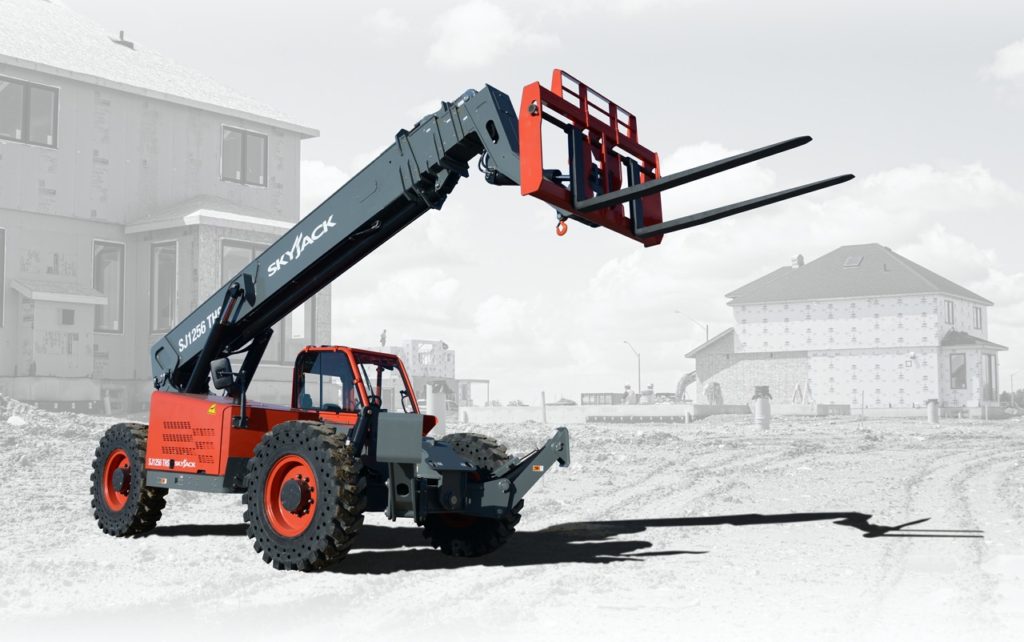Telehandler Safety and Maintenance
Words: Malcolm Early
Words: Malcolm Early, Vice President of Marketing at Skyjack
Photos: Skyjack Inc.
Telehandlers are versatile, adaptable machines that are commonly used in a wide variety of industries. Designed to lift and move heavy loads, they are an essential tool for many businesses. From construction and masonry to warehousing to agriculture, telehandlers are a key piece of equipment.
Today’s telehandlers have been extensively developed and tested with a multitude of safety features; however, like any piece of heavy machinery, telehandlers can be dangerous if not used and maintained properly.
By following these tips for telehandler safety and maintenance, businesses can ensure that these machines are used safely and effectively while also prolonging the life of their machine.
Telehandler Safety
Telehandlers are powerful machines built to move and lift heavy loads to great heights. As such, it is important to follow safety guidelines to prevent accidents and injuries. Read on for our top tips for telehandler safety:
1. Training: Before operating a telehandler, proper training is crucial. Operators should be trained on the specific model of telehandler they will be using, as well as the safety procedures and guidelines for that machine. Training should cover topics such as load capacity, stability, and safe operating procedures. Most equipment manufacturers have an extensive library of handbooks, guides and videos, as well as in-person and virtual training, to help operators. Even simply reading the manual can provide operators with the knowledge they need to operate their machine properly. Basic training and education can go a long way toward optimal machine operation.
2. Load Capacity: While powerful machines, telehandlers have a maximum load capacity, which should never be exceeded. Different types of telehandlers have different maximum loads and lift heights. Operators should be aware of the load and lift capacities of their machine to ensure that all loads are within that safe range. In addition to causing potential malfunctions or damage, overloading a telehandler can possibly cause the machine to become unstable, which can result in serious injuries.
3. Stability: Telehandlers are designed to be stable when lifting loads, but they can become unstable if the load is not properly balanced or secured. In addition to reviewing load capacity, operators should ensure that loads are evenly distributed and properly secured before lifting them. Furthermore, telehandlers should not be operated on uneven or unstable ground, as this can also cause instability.
4. Visibility: Depending on the design, telehandlers can have a limited field of vision, which can make it difficult for operators to see obstacles or other workers in the area. Operators should be aware of their surroundings and use caution when operating the machine. Additionally, telehandlers should be equipped with mirrors or cameras to improve visibility. Operators should also consider the visibility of their job site and the area around them and be aware of what is going on around them throughout operation.
5. Maintenance: Regular maintenance is essential for telehandler safety. Operators should perform daily inspections of the machine prior to operation to ensure that it is in good working condition. Any issues should be addressed immediately, and the machine should not be operated until repairs have been made. Consistent routine maintenance should also be prioritized for everyday safety, as well as long-term machine durability.

Telehandler Maintenance
Proper maintenance is crucial for the safe and effective operation of all machines, including telehandlers. Consistent maintenance goes a long way in mitigating and preventing potential issues or breakdowns while also extending the life of the vehicle. Read on for our telehandler maintenance tips:
1. Daily Inspections: Prior to using the machine, operators should perform an inspection of the machine to ensure that it is in good working condition. This should include checking the tires, brakes, hydraulic system, among other components. Most equipment operators will have guidelines for their recommended daily inspections. It is important that any issues are addressed quickly to maintain safe operation.
2. Regular Servicing: In addition to the daily checks, telehandlers should be serviced regularly to ensure that they are in good working condition. This should include oil changes, filter replacements, among other routine maintenance tasks. Again, most equipment manufacturers will have recommendations regarding suggested regular maintenance.
3. Lubrication: Telehandlers have many moving parts that require lubrication to function properly. Operators should ensure that all moving parts are properly lubricated to prevent wear and tear.
4. Cleaning: Telehandlers should be cleaned regularly to prevent dirt and debris from accumulating on the machine. This can cause damage to the components and reduce the overall lifespan of the machine.
5. Storage: Telehandlers should be stored in a dry, secure location when not in use. Proper storage helps to prevent possible weather damage, as well as potential theft.
Conclusion
Powerful and versatile, telehandlers are essential machines for many businesses. By following straightforward operation and maintenance practices, operators can ensure safe and effective operation while ensuring the longevity of their machine.